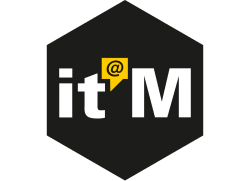Design Principles
- vuetify:
Vuetify is built around the Material Design specification, offering a comprehensive suite of components that ensure a consistent and visually appealing user interface. Its design principles encourage best practices in UI/UX development.
- element-plus:
Element Plus follows a modern design philosophy, focusing on simplicity and elegance. It provides a clean and intuitive interface, making it easy for developers to create visually appealing applications with minimal effort.
- quasar:
Quasar emphasizes a mobile-first design approach, allowing developers to create responsive applications that work seamlessly across devices. Its design principles prioritize performance and usability, ensuring a smooth user experience.
- vue-material:
Vue Material strictly adheres to Google's Material Design guidelines, promoting a clean and consistent look across applications. It focuses on providing a minimalistic design that enhances usability without overwhelming users with complexity.
Component Variety
- vuetify:
Vuetify boasts one of the largest component libraries among Vue UI frameworks, offering a wide array of customizable components that cover almost every use case. It also includes support for advanced features like data tables and charts.
- element-plus:
Element Plus offers a rich set of components tailored for Vue 3, including forms, data display, navigation, and feedback components. It is designed to be flexible, allowing developers to customize components easily to fit their needs.
- quasar:
Quasar provides an extensive range of components and plugins, covering everything from basic UI elements to complex layouts. It also includes features for building mobile and desktop applications, making it a versatile choice for various projects.
- vue-material:
Vue Material includes essential components for building modern web applications, such as buttons, cards, and dialogs. However, its component library is more limited compared to others, focusing on simplicity and adherence to Material Design.
Customization
- vuetify:
Vuetify provides a robust theming system that allows developers to customize the look and feel of components extensively. It supports dark and light themes, as well as custom CSS classes for individual components.
- element-plus:
Element Plus allows for easy customization of components through CSS variables and scoped styles. This flexibility makes it simple to adapt the library to match specific branding requirements or design guidelines.
- quasar:
Quasar provides extensive customization options through its powerful CLI, allowing developers to modify themes and styles at a granular level. It also supports CSS pre-processors like SASS and LESS for advanced styling capabilities.
- vue-material:
Vue Material offers limited customization options, focusing more on adhering to Material Design principles. While it allows for some styling adjustments, it may not be as flexible as other libraries for extensive custom designs.
Community and Support
- vuetify:
Vuetify boasts a large community and extensive resources, including detailed documentation, tutorials, and forums. Its popularity ensures that developers can find support and share knowledge easily.
- element-plus:
Element Plus has a growing community and is actively maintained, with regular updates and improvements. The documentation is comprehensive, making it easier for developers to find support and resources.
- quasar:
Quasar has a strong community and extensive documentation, along with a vibrant ecosystem of plugins and tools. Its active development ensures that it stays up-to-date with the latest trends and best practices in web development.
- vue-material:
Vue Material has a smaller community compared to others, which may result in less frequent updates and support. However, it still provides adequate documentation for developers looking for guidance.
Learning Curve
- vuetify:
Vuetify has a steeper learning curve due to its extensive component library and customization options. However, its well-structured documentation and community resources provide ample support for developers looking to master it.
- element-plus:
Element Plus is relatively easy to learn for developers familiar with Vue.js, thanks to its straightforward API and clear documentation. It allows for quick integration into existing projects without a steep learning curve.
- quasar:
Quasar has a moderate learning curve, especially for developers new to its extensive features. However, its comprehensive documentation and examples help ease the onboarding process for new users.
- vue-material:
Vue Material is simple to grasp for developers already familiar with Material Design principles. Its minimalistic approach makes it easy to implement, but it may lack advanced features for more complex applications.















